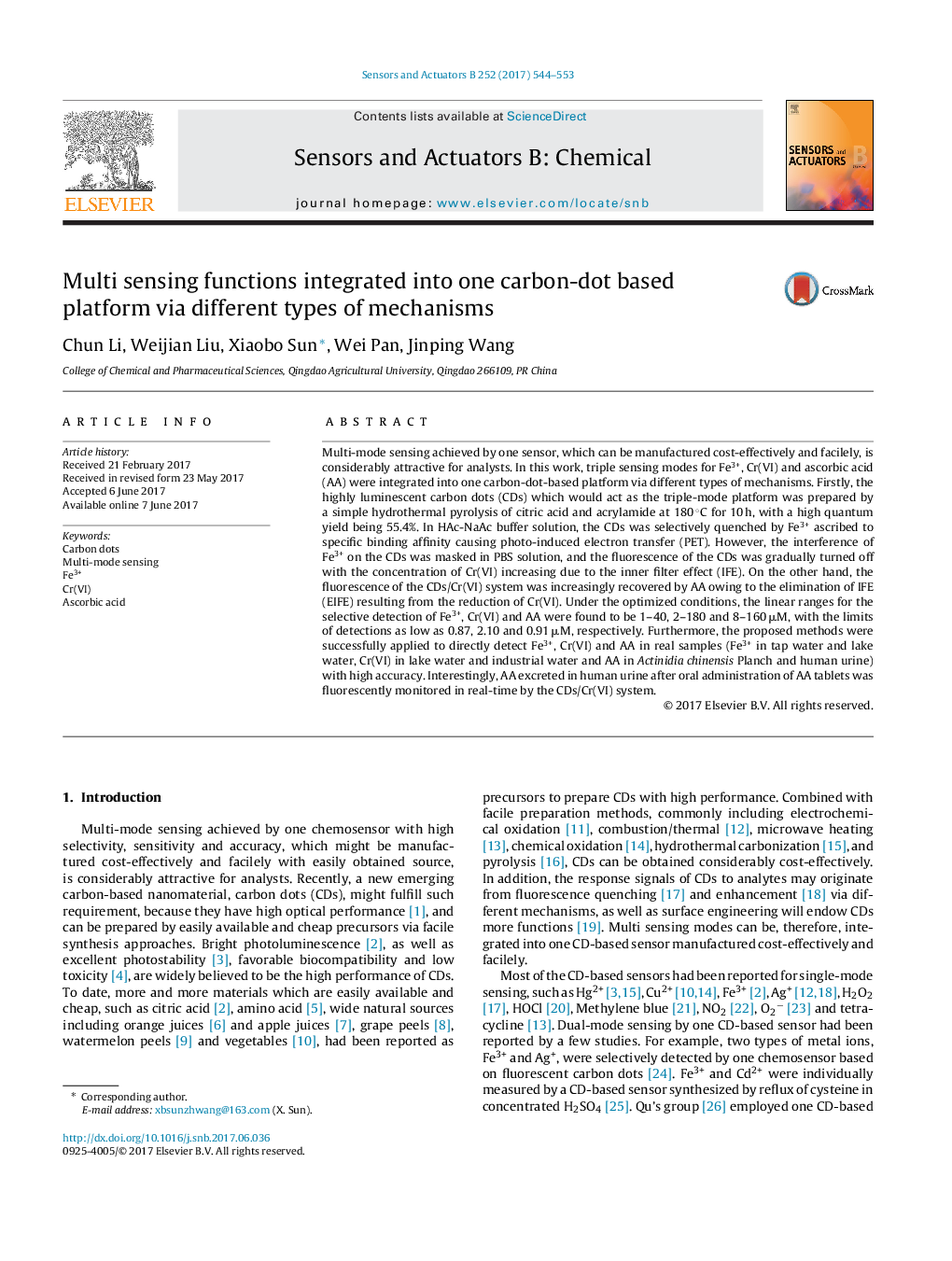| کد مقاله | کد نشریه | سال انتشار | مقاله انگلیسی | نسخه تمام متن |
|---|---|---|---|---|
| 5009105 | 1462039 | 2017 | 10 صفحه PDF | دانلود رایگان |
- Multi sensing functions integrated into one carbon-dot based platform.
- Detection of Fe3+, Cr(VI) and AA achieved via PET, IFE and elimination of IFE.
- AA excreted in human urine was monitored in real-time.
Multi-mode sensing achieved by one sensor, which can be manufactured cost-effectively and facilely, is considerably attractive for analysts. In this work, triple sensing modes for Fe3+, Cr(VI) and ascorbic acid (AA) were integrated into one carbon-dot-based platform via different types of mechanisms. Firstly, the highly luminescent carbon dots (CDs) which would act as the triple-mode platform was prepared by a simple hydrothermal pyrolysis of citric acid and acrylamide at 180 °C for 10 h, with a high quantum yield being 55.4%. In HAc-NaAc buffer solution, the CDs was selectively quenched by Fe3+ ascribed to specific binding affinity causing photo-induced electron transfer (PET). However, the interference of Fe3+ on the CDs was masked in PBS solution, and the fluorescence of the CDs was gradually turned off with the concentration of Cr(VI) increasing due to the inner filter effect (IFE). On the other hand, the fluorescence of the CDs/Cr(VI) system was increasingly recovered by AA owing to the elimination of IFE (EIFE) resulting from the reduction of Cr(VI). Under the optimized conditions, the linear ranges for the selective detection of Fe3+, Cr(VI) and AA were found to be 1-40, 2-180 and 8-160 μM, with the limits of detections as low as 0.87, 2.10 and 0.91 μM, respectively. Furthermore, the proposed methods were successfully applied to directly detect Fe3+, Cr(VI) and AA in real samples (Fe3+ in tap water and lake water, Cr(VI) in lake water and industrial water and AA in Actinidia chinensis Planch and human urine) with high accuracy. Interestingly, AA excreted in human urine after oral administration of AA tablets was fluorescently monitored in real-time by the CDs/Cr(VI) system.
118
Journal: Sensors and Actuators B: Chemical - Volume 252, November 2017, Pages 544-553
